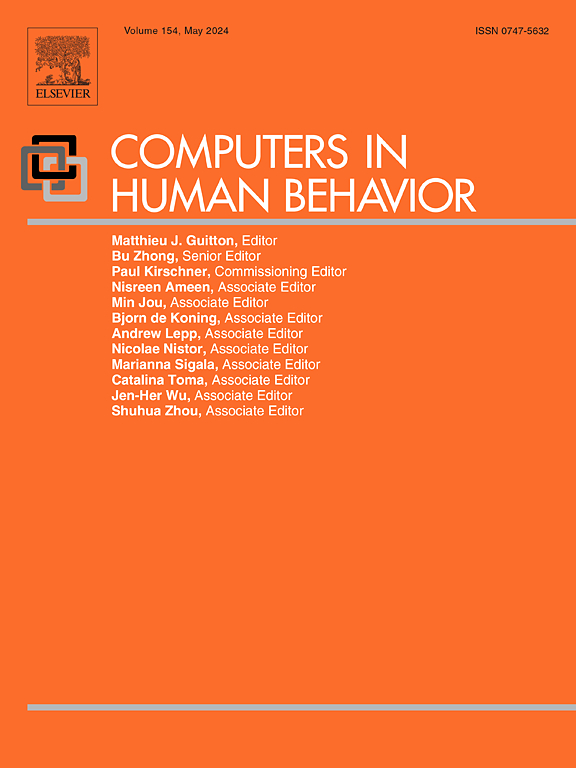Tinder for teens: Youth digital intimate cultures and tech facilitated violence on Snapchat
IF 8.9
1区 心理学
Q1 PSYCHOLOGY, EXPERIMENTAL
引用次数: 0
Abstract
Snapchat has long been a pivotal space for youth digital intimate and sexual cultures, as well as gendered and sexual risks and harms. Despite being one of the most widely used social media platforms among youth, there has been little in-depth research that connects Snapchat's unique features and affordances with young users' practices, behaviours, and experiences on the platform. Responding to this gap, our study used mixed methods to explore British teens' diverse social, sexual, and intimate experiences on Snapchat. We discuss how Snapchat's unique features, such as disappearing images (“Snaps”), algorithmic friend recommendations (“Quick Adds”), and geolocation tracking technology ("Snap Maps”), form new conditions and environments for teens' experiences of socialising, courtship, sexting, and technology-facilitated gender-based and sexual violence. We explore how teens'desires for intimacy underpin their motivations to continue to engage in a range of risk-taking activities—despite their awareness of the dangers involved. We conclude with recommendations for better platform specific regulation and digital literacy that pays attention to teens' rights and agency.
青少年Tinder:青少年数字亲密文化和科技助长了Snapchat上的暴力
长期以来,Snapchat一直是年轻人数字亲密和性文化的关键空间,也是性别和性风险和伤害的关键空间。尽管Snapchat是年轻人中使用最广泛的社交媒体平台之一,但很少有深入的研究将Snapchat的独特功能和功能与年轻用户在该平台上的实践、行为和体验联系起来。为了弥补这一差距,我们的研究采用了混合方法来探索英国青少年在Snapchat上的各种社交、性和亲密体验。我们将讨论Snapchat的独特功能,如消失图片(“Snaps”)、算法好友推荐(“Quick添加”)和地理位置跟踪技术(“Snap Maps”),如何为青少年的社交、求爱、性短信以及技术促进的性别暴力和性暴力体验形成新的条件和环境。我们探讨了青少年对亲密的渴望是如何支撑他们继续从事一系列冒险活动的动机的——尽管他们意识到其中的危险。最后,我们提出了更好的平台特定监管和关注青少年权利和代理的数字素养的建议。
本文章由计算机程序翻译,如有差异,请以英文原文为准。
求助全文
约1分钟内获得全文
求助全文
来源期刊

Computers in Human Behavior
Multiple-
CiteScore
19.10
自引率
4.00%
发文量
381
审稿时长
40 days
期刊介绍:
Computers in Human Behavior is a scholarly journal that explores the psychological aspects of computer use. It covers original theoretical works, research reports, literature reviews, and software and book reviews. The journal examines both the use of computers in psychology, psychiatry, and related fields, and the psychological impact of computer use on individuals, groups, and society. Articles discuss topics such as professional practice, training, research, human development, learning, cognition, personality, and social interactions. It focuses on human interactions with computers, considering the computer as a medium through which human behaviors are shaped and expressed. Professionals interested in the psychological aspects of computer use will find this journal valuable, even with limited knowledge of computers.
 求助内容:
求助内容: 应助结果提醒方式:
应助结果提醒方式:


